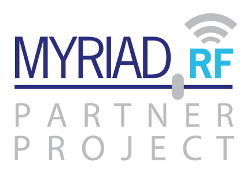UK Spectrum Licensing for Test and Development
Posted: August 29th, 2014 | Author: Andrew Back | Filed under: Uncategorized | No Comments »In most parts of the world a spectrum licence is required in order to operate a mobile base station (BTS), in much the same way that a licence would be required if you wanted to set up your own radio or TV station. This is not unreasonable and, after all, a great deal of inconvenience can be caused if spectrum use is not carefully coordinated and interference leads to service outages.
License-exempt use
If you are fortunate enough to live in the Netherlands it’s possible to operate a BTS in guard band situated between GSM and DECT allocations, license free, provided that transmit power is limited to 200mW and antenna height to 10 metres. And this is precisely what Fairwaves did in August 2013, when together with Event Connection they built a GSM network that covered the city of Nijmegen.
Similar license-exempt use is also permitted in Sweden and possibly some other areas — but these are the exception to the rule.
While access to guard band spectrum is permitted for low power use in the UK, this is limited to those 12 licensees who together paid Ofcom £3.8 million for the privilege and were awarded licences back in 2006.
Non-operational licensing
Regulatory authorities typically provide a class of licence that can be used to support the development and testing of wireless technologies. Here in the UK this is referred to by Ofcom as a Non-operational licence, and was actually previously known as a Test and Development licence. These may be valid for up to one year and currently cost £50 per site.
It’s important to note that a non-operational licence:
- may not be used to provide a service, as to do so would constitute being a cellular operator and this is not covered and would therefore be unlawful;
- is not a “GSM licence” per se and instead provides permission to use the allocated spectrum subject to certain power, bandwidth and antenna etc. constraints;
- could cover any frequency, provided that Ofcom are able to clear use — which is highly dependent upon what has been requested and what the primary use of that spectrum is;
- is a privilege and not a right!
Applicants will be expected to provide details such as the requested frequencies, modulation type and bandwidth, transmitter power level, and antenna gain and height. Those without a background in RF systems may find answering some of the questions a challenge, however, a solid understanding of the fundamental basics is essential.
There are no hard and fast rules when it comes to what power levels or antenna gains etc. will be permitted under a non-operational licence, but note that requests for access to spectrum are subject to approval by primary users. Applications should be driven by need, common sense must prevail, and a few milliwatts TX power and a low gain antenna should suffice for bench testing.
Those who wish to apply for a non-operational licence should:
- See the Ofcom website for the application form and accompanying guidance;
- Note that the class of emission for GSM is 271KF7W;
- Only apply for what is actually required and have realistic expectations;
- Contact Ofcom when uncertain — they are most helpful.
Note that regulators in other countries typically provide similar licensing schemes that can be used to support research and development.
The need for lighter regulation
Lighter regulation for guard band spectrum, such as has been employed in the Netherlands and Sweden, would provide a great many benefits beyond simply facilitating the development and testing of wireless technologies. For example, SMEs and communities could use it to provide network service in rural and sparsely populated areas that have been deemed not economically viable by the incumbent operators. However, this topic is one that requires a blog post all to itself!
Andrew
Top image: bench testing a Parallella board running the Osmocom software driving a UmTRX.




Leave a Reply